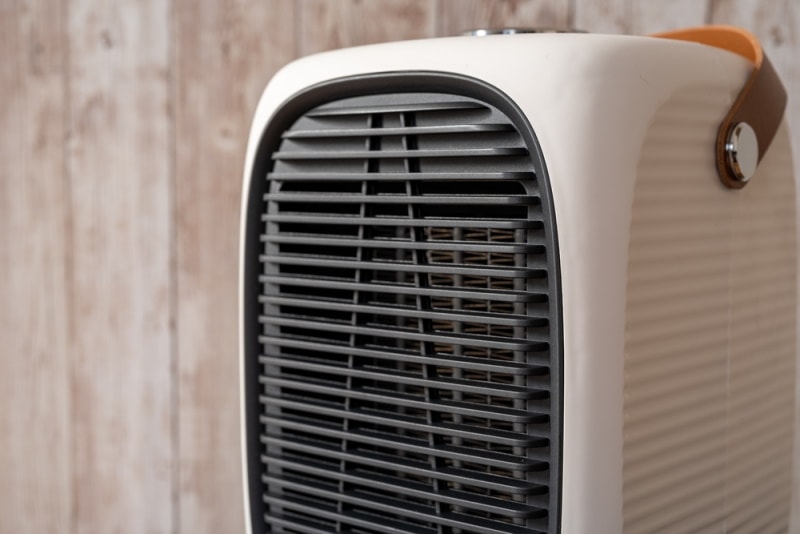How Do You Get Rid of Bats in Your Attic? 7 Tips & Tricks
-
Ed Malaker
- Last updated:

A bat can get into your attic through an open window or even a small hole in the wall and can quickly create a large colony, so it is important to act fast if you notice any bats in your home. However, most people don’t know how to safely remove these creatures, so keep reading as we present you with a list of things that you can try and a few things to consider.
The 7 Tips to Get Rid of Bats in the Attic
1. Add Lighting

- Required Materials: LED spotlights or strip lights
Bats prefer dark areas, so adding plenty of bright lights can help discourage them from making your home their private residence, without causing harm to any of the bats.
How Do I Implement It?
Wait until after dusk, when the bats leave to hunt for food, and quickly add a few LED spotlights or strip lights to the room, and turn them on. The light should cause the bats to move to another location when they return, but make sure the lights don’t create any dark shadows where the bats can still hide.
- Easy to use
- Effective
- Hard to eliminate all the shadows
2. Add Heating

- Required Materials: Space heaters
Adding heaters can be a great way to convince the bats to move on because they don’t like hot, dry areas. If you can increase the temperature of your attic to above 100 degrees Fahrenheit, the bats will likely find another place to sleep.
How Do I Implement It?
Wait until the bats leave to hunt for food, and install a few space heaters while they are gone, and turn them on. Once the temperature is above 100 degrees Fahrenheit, the bats will become more uncomfortable. The downside to this method is that multiple heaters can create a fire hazard, and these heaters are often expensive to run.
- Easy to use
- Effective
- Fire hazard
- High cost
3. Use Essential Oils

- Required Materials: Essential oils
The powerful scent of essential oils can be too much for many insects and animals to bear. Spreading some around your attic can be a great way to convince bats to move on to another location. While not as effective as heat or light, they work well enough, and many scents that are effective against bats are quite pleasant, including cinnamon, peppermint, clove, and eucalyptus.
How Do I Implement It?
Add 1 teaspoon of an essential oil to a 16-ounce spray bottle of water, and shake well to create an essential oil solution that you can spray around the attic after the bats leave to hunt for food. The good thing about this option is that it’s relatively inexpensive, and you can even use it as a deterrent to keep bats from entering your house in the first place. The downside is that it doesn’t work as well as most other methods, and essential oils can be harmful to many pets, including cats, dogs, and birds.
- Inexpensive
- Easy to implement
- Not that effective
- Can be harmful to pets
4. Use Ultrasonic Repellants
- Required Materials: Ultrasonic pest repeller
An ultrasonic pest repeller is an electronic device that can use batteries, solar power, or home electricity to produce a sound that only bats, mice, and other rodents can hear, driving them away. While some people don’t find any success with these devices, other people do, so it might be worth considering.
How Do I Implement It?
Install the ultrasonic devices after the bats leave to hunt for food. You can also use these devices before the bats arrive as a deterrent, and they are useful for other pests, like rodents and insects. The downside is that these units can be expensive, and their effectiveness is questionable.
- Easy to use
- Can work as a deterrent
- Works on other pests
- Expensive
- Questionable results
5. Use Mothballs

- Required Materials: Mothballs
Mothballs can be effective at persuading bats to move on and are relatively inexpensive to purchase. They also last a long time, so they can help keep bats out of your attic in the future.
How Do I Implement It?
Put a few mothballs in a cloth pouch, and hang several around the attic when the bats leave to go hunt. With luck, the bats will hate the smell and move to another location. The downside to this method is that many people don’t like the smell of mothballs, and they are toxic to children and pets, possibly leading to liver and kidney damage.
- Inexpensive
- Easy to use
- Toxic to humans and pets
- Bad smell
6. Set Up Bat Houses
- Required Materials: Bat houses
Purchasing one or more bat houses to place around your property can be a great way to convince bats to leave your attic without losing all the benefits that come with having them around, like their love of eating mosquitos.
How Do I Implement It?
Make or purchase one or more bat houses, and follow the instructions to install them on your property. The downside is that this can take more work than many other options, and the houses can be expensive. There is also no guarantee that the bats will leave your attic to go to the bat house.
- Keeps bats close by
- Creates a permanent home for the bats
- Expensive
- Hard to install
- No guarantee that bats will leave your attic
7. Call Wildlife Control

- Required Materials: Wildlife control technician
The best option is to call your local wildlife control upon discovering bats in your attic. Many species of bats are endangered and protected by state and federal laws, so harming them or in some cases, interfering with them can get you in legal and financial trouble, even though they are in your home.
How Do I Implement It?
Most areas have a wildlife control, animal control, or pest control center that you can call for help if you find bats in your attic. The good news is that the staff will know all the laws and what to do and will work quickly to solve the problem. However, they can also be quite expensive.
- Solves the problem quickly and legally
- Expensive
Find a pest-control specialist in your area, and get free, no-commitment estimates for your project.Consult a PEST-CONTROL expert

Frequently Asked Questions
Will Bats Return to My Home If I Trap and Move Them?
Bats have a great sense of direction, and there is a good chance that they will return to your home after you move them, even from quite a distance. You may also need to keep the lights and heat on for several days, as the bats may return to your home to see if the situation has grown more favorable.

How Can I Prevent Bats From Getting into My Home?
The best way to keep bats out of your attic is to check it frequently for small holes that could be used to gain entry. If you find any, seal them up quickly. It’s also a good idea to make sure there are no holes in your screens and to never leave an unscreened window open.
What Attracts Bats?
Bats tend to enjoy dark, moist areas like caves and large attics. They also like to nest close to food sources, so look for them anywhere there is a large amount of standing water that can breed mosquitos, which are among their favorite foods. They will also nest close to fruit trees and in areas with plenty of pollen.
Conclusion
Calling wildlife control is likely your best option for getting rid of bats, as many species are endangered and protected under law. A wildlife control organization will know how to trap and move the bats and will do it quickly. The other options on this list can help if there are only a few bats. Some methods, like the essential oils and mothballs, can help prevent the bats from taking up residence in the first place, though these options can be harmful to pets and people. Adding bat houses around your property can provide a home to endangered bats, which they may prefer over your attic.
Featured Image Credit: Pixabay
Contents



